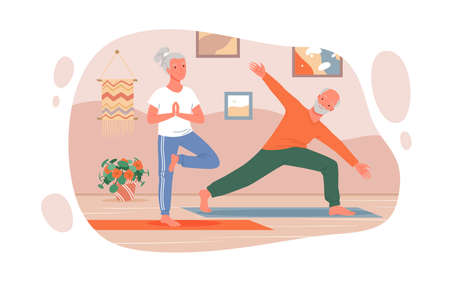Introduction: The Indian Office Routine and Body Stiffness
In the fast-paced metros of India, from Bengaluru to Mumbai and Gurugram, the daily grind often centres around long hours at the office desk. For many Indian professionals, especially those in IT hubs or corporate sectors, attending back-to-back meetings is part and parcel of the job. Whether it’s a chai pe charcha (discussion over tea) that turns into an hour-long brainstorming session or a virtual meeting that stretches beyond its scheduled time, these routines can lead to prolonged sitting and minimal movement. Over time, this sedentary lifestyle starts manifesting as stiffness in the neck, shoulders, back, and even legs. Many working professionals in India are familiar with the discomfort of ‘jhatka’—that sudden stiff feeling when you stand up after hours of sitting. These experiences are not just minor annoyances; they can affect productivity, mental focus, and overall well-being. Recognising these challenges is the first step towards addressing them, and yoga offers a holistic approach deeply rooted in Indian culture to help relieve body stiffness after long office meetings.
Understanding Why Our Bodies Feel Stiff
Many Indian professionals experience body stiffness after long office meetings, which is more common than we might think. Let us explore the root causes of this discomfort, especially in the context of typical Indian office environments.
Common Causes of Body Stiffness in Indian Offices
| Root Cause | Description | Indian Office Context |
|---|---|---|
| Prolonged Sitting | Sitting for extended periods restricts blood flow and reduces joint mobility. | Most offices in India require employees to sit for hours, especially during back-to-back meetings or reviews. |
| Air Conditioning | Constant exposure to cold air can tighten muscles and joints, leading to stiffness. | AC is often set at low temperatures in meeting rooms to combat the heat outside, but this can make muscles tense up. |
| Poor Workstation Ergonomics | Improper desk height, chair support, and screen placement strain the neck, shoulders, and back. | In many Indian offices, workstations are not ergonomically designed due to cost or space constraints, causing awkward postures. |
The Indian Work Culture Perspective
Long meetings are a staple in many Indian companies, sometimes stretching for several hours without sufficient breaks. The traditional chai break is becoming less frequent in the fast-paced IT sector. Furthermore, open-plan offices and shared spaces may not always allow for movement or stretching during work hours.
The Impact on Overall Well-being
This combination of physical factors and cultural norms leads to increased muscle stiffness, fatigue, and even headaches. Over time, these habits can contribute to chronic pain and reduced productivity if left unaddressed.

3. Quick Desk Yoga: Simple Stretches and Asanas
Step-by-Step Guide to Office-Friendly Yoga
Sitting for hours in meetings can leave your body feeling tight and stiff. Thankfully, you don’t need a yoga mat or a lot of space to bring relief right at your desk. Here is a step-by-step guide on easy yoga poses and stretches inspired by ancient Indian practices that are perfect for the office environment.
Tadasana (Mountain Pose) – Standing Version
How to Do It:
1. Stand up straight behind your chair, feet together.
2. Distribute your weight evenly on both feet.
3. Inhale deeply as you raise your arms overhead, palms facing each other.
4. Stretch your whole body upwards, keeping your shoulders relaxed.
5. Hold for 10–15 seconds while breathing normally.
6. Exhale as you gently release and lower your arms.
Bhuajangasana (Cobra Pose) – Seated Variation
How to Do It:
1. Sit upright at the edge of your chair, feet flat on the floor.
2. Place your hands on your lower back for gentle support.
3. Inhale as you lift your chest forward and upward, rolling your shoulders back.
4. Gaze slightly upwards without straining the neck.
5. Hold for 10–12 seconds, then slowly return to neutral.
Simple Neck Rotations
How to Do It:
1. Sit comfortably with an erect spine.
2. Slowly drop your chin towards your chest.
3. Gently rotate your neck clockwise in a full circle, completing three rounds.
4. Repeat anti-clockwise for another three rounds.
5. Breathe deeply and move mindfully to avoid any strain.
Cultural Tips for Indian Workspaces
If you’re in a shared office or working from home in India, feel free to adapt these stretches during chai breaks or before lunch. These familiar asanas can be performed in sarees, kurtas, or formal office attire—no special gear needed! Practising desk yoga not only relieves stiffness but also helps maintain focus and energy throughout busy workdays.
4. Breathwork (Pranayama) for Immediate Relief
After sitting through long office meetings, it is common to feel your body tensing up and your mind wandering. In Indian culture, pranayama or yogic breathwork is a time-tested practice that can bring instant relief from such discomfort. By incorporating simple yet powerful breathing techniques like Anulom Vilom and deep belly breathing into your daily routine, you can calm your mind, reduce stress, and ease muscle stiffness without even leaving your chair.
Why Choose Pranayama During Office Hours?
Pranayama not only enhances oxygen supply to the brain but also helps in releasing physical tension accumulated in the neck, shoulders, and lower back. Practising pranayama between meetings or during short breaks can help you feel recharged and focused for the rest of the day.
Popular Pranayama Techniques for Office Workers
| Technique | How to Practice | Benefits |
|---|---|---|
| Anulom Vilom (Alternate Nostril Breathing) | Sit upright. Use right thumb to close right nostril; inhale through left. Close left nostril with ring finger; exhale through right. Repeat for 2-5 minutes. | Balances energy, calms mind, reduces anxiety and stiffness. |
| Deep Belly Breathing | Sit comfortably with hands on belly. Inhale deeply through nose, allowing belly to expand. Exhale slowly, contracting the abdomen. Repeat for 1-2 minutes. | Relaxes muscles, increases oxygen flow, releases tension. |
Tips for Effective Practice
- Find a quiet space or simply close your eyes at your desk.
- Sit with a straight spine and relaxed shoulders.
- Breathe in slowly and deeply, focusing on each inhalation and exhalation.
Including these easy pranayama practices after meetings can make a significant difference in how energised and comfortable you feel throughout your workday. Over time, you’ll notice not only less stiffness but also improved concentration and overall well-being—perfectly blending ancient Indian wisdom with modern office life.
5. Ayurvedic and Nutritional Tips for Flexible Muscles
When looking to relieve body stiffness after long office meetings, traditional Indian dietary practices rooted in Ayurveda can play a significant role in enhancing muscle flexibility. Many common kitchen spices and herbs have been used for centuries across Indian households to support joint health and reduce muscular discomfort. These time-tested remedies, combined with yoga, offer a holistic approach for professionals seeking natural solutions.
Incorporate Anti-Inflammatory Spices
Turmeric (haldi) is celebrated in India for its powerful anti-inflammatory properties, thanks to the active compound curcumin. Adding a pinch of turmeric to your daily dal, sabzi, or a warm glass of milk (haldi doodh) can help manage inflammation and stiffness. Ginger (adrak), whether consumed as tea or added fresh to dishes, is another excellent choice to promote circulation and ease muscle tension after hours of sitting.
Herbal Home Remedies for Flexibility
Tulsi (holy basil) leaves can be brewed into tea to detoxify the body and improve flexibility. Ashwagandha, an adaptogenic herb found in many Indian kitchens, helps reduce stress-induced muscle tightness—consider incorporating it into smoothies or warm milk for added benefit. Methi (fenugreek) seeds soaked overnight and consumed in the morning are also known to lubricate joints and enhance mobility.
Balanced Diet for Muscle Support
A balanced Indian diet rich in dals, green leafy vegetables like spinach (palak), and seasonal fruits provides essential vitamins and minerals crucial for muscle health. Including omega-3 sources such as flaxseeds (alsi) or walnuts supports joint lubrication and flexibility. Stay hydrated with nimbu pani (lemon water) or coconut water throughout the day to maintain electrolyte balance, which is vital for muscle relaxation.
By integrating these Ayurvedic principles and local dietary wisdom into your daily routine, you can naturally complement your yoga practice and experience lasting relief from body stiffness commonly experienced after extended office meetings.
6. Maintaining Regular Movement: Tips from Yogic Wisdom
Office work in India, especially in bustling cities like Bengaluru or Mumbai, often involves long hours at a desk. According to yogic wisdom, our bodies are not meant to remain stagnant for too long. Movement is essential for maintaining prana, the vital life force. Here are some practical ways inspired by traditional yoga philosophy to keep your body flexible and energised throughout the workday:
Remind Yourself to Move with Mindfulness
Yogis emphasise the importance of being present and aware of the body’s needs. Set gentle reminders on your phone or computer every hour to stand up, stretch, or take a short walk—even if it’s just around your office cubicle. This habit, known as “Yogic Intervals,” helps prevent stiffness and keeps energy flowing.
Integrate Micro-Movements into Your Routine
Simple stretches like Tadasana (Mountain Pose) or seated spinal twists can be done while sitting at your desk. Practice rolling your shoulders, flexing your wrists, or stretching your legs under the table—these small movements reflect the yogic principle of sukha (comfort) and can make a big difference over time.
Adopt Indian-Inspired Flexibility Rituals
Many Indian offices now encourage movement breaks such as “chai walks”—a tradition where colleagues gather for a cup of chai and a stroll. Combine this with mindful breathing or subtle neck rotations as suggested in yoga practice for an added benefit.
Create a Flexible Workspace
If possible, arrange your workspace so you can alternate between sitting and standing. Keep a yoga mat handy for short asanas during lunch or tea breaks. Even five minutes of Surya Namaskar (Sun Salutations) can refresh both body and mind.
Listen to Your Body’s Signals
Traditional yoga teaches us to respect bodily signals and never force movement. If you feel tightness or discomfort, pause and address it with gentle stretches rather than pushing through the pain.
Cultivate Consistency with Support from Your Community
Encourage your colleagues to join you in these practices. Many Indian workplaces now have wellness groups or yoga clubs—participating together fosters accountability and makes regular movement enjoyable.
By weaving these yogic insights into daily office life, you’ll reduce stiffness after meetings and cultivate greater flexibility, productivity, and well-being throughout your workday.
7. Conclusion: Making Yoga a Part of Indian Office Culture
Integrating yoga and mindful movement into the Indian workplace offers a holistic solution to counteract the stiffness and discomfort caused by long office meetings. Regular practice not only helps in relieving physical tension but also enhances mental clarity, reduces stress, and promotes a sense of unity among colleagues. In India, where ancient traditions and modern work culture blend seamlessly, embracing yoga in offices can rejuvenate both body and mind, turning everyday challenges into opportunities for well-being. By encouraging each other to participate in short stretching sessions or group pranayama breaks, teams can foster a supportive environment rooted in wellness. Remember, even five minutes of mindful movement can make a significant difference. Let’s take pride in our rich heritage and inspire our workplaces—whether it’s through gentle asanas at your desk or a quick meditation before chai break—to prioritise health together. When one person leads by example, others are sure to follow. So, roll out your mats, invite your colleagues, and make yoga an essential part of your office routine for a healthier, happier workplace.


